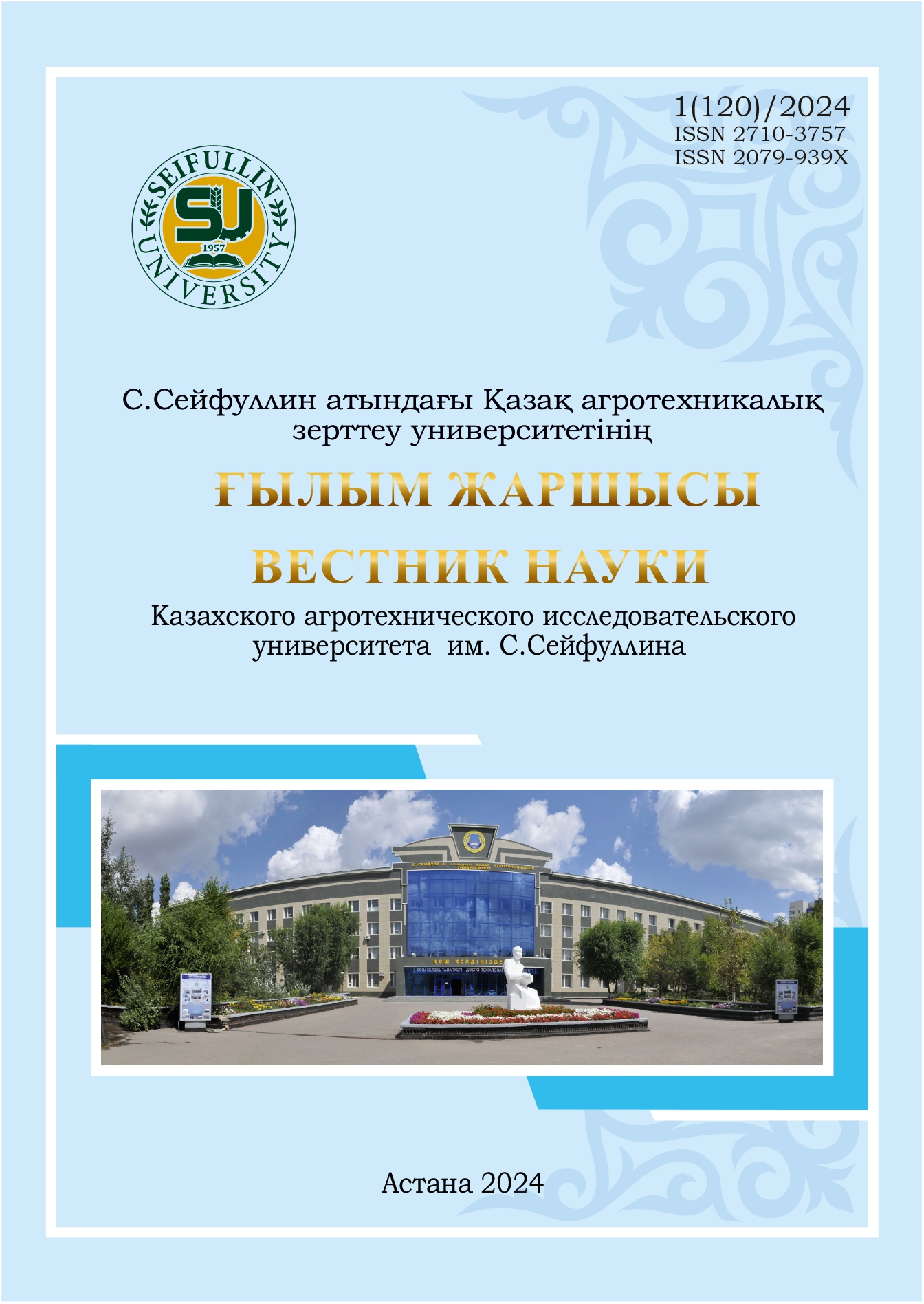INFLUENCE OF TIMING OF PLANTING OF LEAF LETTUCE ON YIELD UNDER CONDITIONS OF «LED SYSTEM MEDIA» GREENHOUSE COMPLEX LLP
DOI:
https://doi.org/10.51452/kazatu.2024.1(120).1632Keywords:
Lactuca sativa; greenhouse, yield; planting time; seedling.Abstract
One of the social and economic tasks of agriculture in the northern regions of Kazakhstan is to provide the population with fresh green products. To optimize the cultivation and increase lettuce (Lactuca sativa) production in protected soil conditions, a study was conducted to examine the effect of planting dates on the growth and development of the studied crop. The experiment is carried out for four seasons in the greenhouse complex – “Led System Media” LLP in the Akmola region. Sowing Batavia lettuce type, Aficion variety was done in triplicate. Based on phenological observations, biometric measurements, and yield recordings, it was found that autumn planting is inferior to summer sowing in several aspects. Autumn-sown lettuce exhibited a longer ripening period of 42 days and fewer leaves (1-2 pcs. /plant) compared to summer-sown lettuce, which is a crucial productivity factor for this crop. Results from two seasons indicate that summer sowing provides optimal conditions for the rapid accumulation of plant biomass, fostering the growth and development of the studied crop. This understanding of distinctive growing season features in each season allows for competent planning and organization of leaf lettuce cultivation, ultimately enhancing production profitability, especially during off-season months, to ensure the supply of high quality products in winter and spring.

